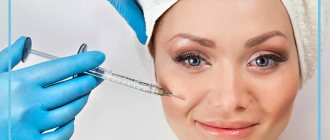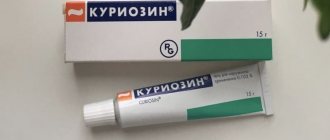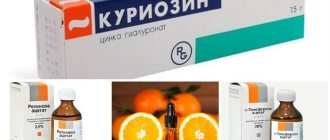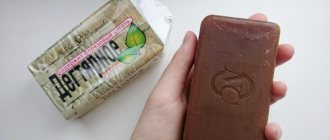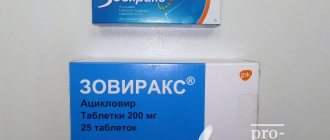Green tea is good for your health. But is it good for treating acne vulgaris? Maybe yes. This is because green tea (like any other tea) is rich in polyphenols.
A study found that topical tea polyphenols may help improve mild to moderate acne. If you're looking for a natural way to deal with acne (not cystic acne), you may want to try this popular home remedy.
The research surrounding this remedy is very limited, but there are several studies that explore how green tea can help your acne condition. In this article, we have discussed how green tea can soothe your condition and ways to use it to treat acne.
Does green tea help with acne?
Yes, green tea can help you deal with acne vulgaris due to the following benefits:
Helps reduce inflammation
Green tea is rich in catechins. Of the four main catechins found in green tea, epigallocatechin-3-gallate (EGCG) has been shown to be beneficial in the treatment of acne and rosacea. It works by reducing inflammation. A study found that applying 2% green tea lotion reduced inflammatory acne.
EGCG is a powerful antioxidant and has immunomodulatory and photoprotective properties. It also has antiangiogenic (meaning it reduces the growth of new blood vessels that tumors need to grow) and anti-inflammatory effects.
It helps reduce sebum production
Excessive sebum production is one of the main causes of acne. Topical application of green tea can help reduce sebum secretion and treat acne.
A study of 22 non-smoking healthy men examined the effects of 5% topical green tea extract for 60 days. Researchers found a significant decrease in sebum secretion.
Drinking green tea can also help reduce sebum production and fight acne.
Polyphenols in green tea help reduce acne
Green tea polyphenols are powerful antioxidants. A clinical study examined the effects of 2% tea lotion on 47 patients with mild to moderate acne. After two weeks, the researchers observed a therapeutic effect on acne lesions.
Helps reduce acne-causing bacteria
An 8-week study found that EGCG, one of the four main catechins in green tea, may help reduce acne by inhibiting the growth of P. acnes bacteria.
These studies are not conclusive and further research is needed to evaluate the effectiveness and benefits of green tea for acne. Also, note that green tea or any other home remedy may not work on cystic and hormonal acne. You need to consult your doctor for proper treatment.
However, if you have mild to moderate acne, you can try using (or consuming) green tea at home to help manage your condition. Here are some recipes you can try at home.
The effects of tea on the skin
The green variety is usually used to treat dermatological problems. It contains a higher content of useful components and its beneficial effects on the skin are more obvious. This drink is used to relieve the following skin conditions:
- Acne caused by liver problems. The skin, along with sweat, removes a certain amount of toxins, therefore, with serious intoxication, it sometimes becomes covered with acne. Due to its high concentration of antioxidants, the tea can be drunk for general body cleansing and used topically to help the skin remove toxins;
- Wounds, inflamed rashes, pimples and other damage to the integrity of the epidermis. Tannins promote rapid healing. And the tannids contained in tea disinfect and destroy pyogenic bacteria. The more concentrated the decoction, the better the antimicrobial effect. Don’t rush to throw away yesterday’s tea leaves. A two to three day infusion only enhances its antibacterial properties. But you can’t drink yesterday’s tea;
- Dry skin. The microelements that make up the drink maintain the water-salt balance of the epidermis, which is especially important for dry skin or skin exposed to frostbite or active exposure to sunlight;
- Fading skin, first wrinkles. Green tea catalyzes metabolic processes, stimulating cellular metabolism and collagen production. As a result of regular external use of this product, the skin looks younger, shallow wrinkles disappear, acne marks and superficial acne scars disappear.
Green tea almost never causes allergies, except in cases of individual intolerance. Therefore, it can be used to relieve all dermatological problems: from cuts and burns to serious acne. The drink is suitable for nourishing all skin types; its effect is especially beneficial on dry skin.
How to use green tea for acne?
Honey and green tea for acne
Honey has antimicrobial and wound-healing properties. It can inhibit the growth of P. acnes bacteria and help reduce acne.
You will need:
- 1 green tea bag
- 1 tbsp. l. organic honey
- Hot water
- Facial cleanser
- Towel
Method
- Soak a green tea bag in hot water for about 3 minutes.
- Remove the bag and let it cool. Cut open the bag and remove the leaves.
- Add honey to the leaves.
- Wash your face with facial cleanser and pat dry.
- Apply the honey and green tea mixture to your face and leave it on for about 20 minutes.
- Rinse off with cool water and pat dry.
- Do the procedure 3-4 times a week.
Green tea spray for acne
This face mist will help soothe your skin. It helps minimize redness and treats existing acne. The EGCG in green tea helps treat acne. This treatment may be more effective if you also consume green tea regularly.
You will need:
- Facial cleanser
- Green tea
- Spray
- Non-comedogenic moisturizer
- Towel
Method
- Brew some green tea and let it cool completely. (You can drink most of it and save 2-3 tablespoons for this treatment.)
- Pour the cooled green tea into a spray bottle.
- Wash your face with cleanser and pat dry with a towel.
- Spray green tea on your face and let it dry.
- Rinse with cold water and pat skin dry with a towel.
- Apply moisturizer.
- Do this 2 times a day.
Apple cider vinegar and green tea for acne
There is not a single study proving the abilities of apple cider vinegar. However, apple cider vinegar is a popular home remedy for a variety of skin problems. It is believed to help tone the skin and minimize skin pores. It can also balance your skin's PH levels. You can use this mixture as a facial toner after cleansing your face.
You will need:
- ¼ cup apple cider vinegar
- ¾ cup brewed green tea
- non-comedogenic moisturizer
- facial cleanser
- Towel
- Cotton pad
- Glass jar
Method
- Brew some green tea and let it cool completely.
- Combine cooled green tea and apple cider vinegar and place in a glass jar for storage. (Store the mixture in the refrigerator.)
- Wash your face with facial cleanser and pat it dry with a towel.
- Soak a cotton pad in this mixture and apply it to your face. Let it dry.
- Apply moisturizer.
- Use 2 times a day.
Tea tree oil and green tea for acne
Tea tree oil will be effective in moderating acne. It has strong antimicrobial properties that are effective against acne.
You will need:
- ½ glass of green tea
- 3-4 drops tea tree essential oil
- Cotton pad
- Facial cleanser
- Non-comedogenic moisturizer
- Towel
Method
- Brew some green tea and let it cool completely.
- Mix cooled green tea and tea tree oil and pour into a glass jar for storage. (Store the mixture in the refrigerator.)
- Wash your face with cleanser and pat dry with a towel.
- Saturate a cotton pad with the mixture and blot your face with it. Let it dry. Shake well before use.
- Apply moisturizer.
- Do this 2 times a day.
Aloe Vera and Green Tea for Acne
Aloe vera has an anti-acne effect on the skin. The mucopolysaccharides present in it help keep your skin hydrated by binding moisture to the skin and stimulating fibroblasts that produce collagen and elastin to keep your skin youthful and plump.
You will need
- 2 green tea bags
- 1 glass of water
- 1 tbsp. l. fresh aloe vera gel
- Cotton pad
- Facial cleanser
- Non-comedogenic moisturizer
- Towel
Method
- Brew two green tea bags in a cup of boiling water to make a strong solution. Let the solution cool.
- Mix cooled green tea and aloe vera gel and pour it into a glass jar for storage. (Store the mixture in the refrigerator.)
- Wash your face with cleanser and pat dry with a towel.
- Soak a cotton pad in this mixture and apply it to your face. Let it dry.
- Apply your moisturizer.
- Do this 2 times a day.
Lemon and green tea for acne
Lemon juice contains vitamin C and citric acid. It is a part of many popular home remedies and is used for its astringent properties. It is said to tighten skin pores and have mild whitening properties. Along with green tea, lemon juice can help keep your skin acne-free. However, it can make your skin photosensitive, so apply sunscreen whenever you go out.
You will need
- ¼ cup green tea
- Juice of 1 lemon
- Cotton pad
- Facial cleanser
- Non-comedogenic moisturizer
- Towel
Method
- Brew a quarter cup of green tea and let it cool completely.
- Mix cooled green tea with lemon juice and pour into a glass jar for storage. (Store the mixture in your refrigerator.)
- Wash your face with cleanser and pat dry with a towel.
- Soak a cotton pad in this mixture and apply it to your face. Let it dry.
- Apply moisturizer.
- Do this 2 times a day.
Olive oil and green tea for acne
Olive oil is one of the best oil cleansing options. Oil cleansing helps remove traces of makeup and dirt without disturbing your skin's natural balance. Applying infused green tea to your face helps soothe it and reduce inflammation.
You will need
- Facial cleanser
- Green tea
- Spray bottle
- 1 tablespoon extra virgin olive oil
- Towel
Method
- Brew some green tea and let it cool completely. (You can drink most of it and save 2-3 tablespoons for this treatment.)
- Pour the cooled green tea into a spray bottle.
- Massage olive oil onto your face. Leave it on for a few minutes.
- Dip a washcloth in warm water, wring it out and wipe your face.
- Wash your face with cleanser and pat dry with a towel.
- Spray green tea on your face and let it dry.
- Do this every day.
Apart from home remedies, there is another way to use green tea for acne. You can buy powdered or liquid green tea extract with EGCG, mix it with your favorite cream and apply it to your skin. These excerpts are readily available on the Internet.
Unknown properties of familiar tea
What are the benefits of tea for the human body? Let's look at its chemical composition, which contains more than a hundred substances. Depending on the type of drink, from a third to a half of these components dissolve in water.
- Tannins. There are up to 30% of them in good tea. It is to them that the drink owes its tart taste. There are about 30 of them, but the most important of them is tannin. This substance disinfects wounds, stops bleeding, and has a bactericidal effect. For small household wounds, cuts, damage to the epidermis after acne removal, a cotton swab dipped in green tea can easily replace the green tea without burning the epidermis;
- Polyphenols. These substances are natural antioxidants. It’s not for nothing that a cup of green tea comes in handy in case of poisoning (including alcohol poisoning), viral diseases. Due to their natural origin, such antioxidants have no side effects;
- Amino acids, trace elements and vitamins. There are about twenty amino acids in tea, and among the vitamins it contains group B, ascorbic acid, P and PP, K. Mineral substances in the drink are only up to ten percent, including iron, potassium and calcium, manganese, iodine, phosphorus and others;
- Caffeine (in tea - theine). In elite varieties, the content of this substance reaches five percent, but in green drinks it is much less, and there are also completely caffeine-free types. At the same time, theine is softer than its coffee counterpart and does not accumulate in the body;
- Essential oil. There is not much of it in the drink, only a fraction of a percent, so it does not have any significant effect on the body. But thanks to him, each type of tea exudes its own unique aroma, which lifts the mood and has a beneficial effect on the nervous system;
- In addition, tea contains pigments, organic acids, pectins, proteins and carbohydrates.
It is important to understand that we are talking about high-quality brewed tea and bagged surrogate has nothing to do with this category. It is better not to consume sachets whose contents look like dust or contain added fruits, berries and herbs declared by the manufacturer. It is not clear what dyes and harmful substances are activated in boiling water.
Tips for choosing the best quality green tea
Choosing the right green tea with the highest levels of antioxidants (especially EGCG) is very difficult. Antioxidant content varies from brand to brand. You need to be careful before choosing your drink. Whether drinking or topically, choosing the right green tea is essential to reaping maximum benefits.
Here are some tips to keep in mind when choosing your brew:
- Do some research. Check the brand's label and see the amount of EGCG per serving. Browse their website and find out the EGCG levels. Choose the one that has the highest EGCG content.
- Loose leaves have a higher antioxidant content than tea bags. However, if you cannot find loose leaves, then you can choose tea bags with the highest EGCG content.
- Green tea has a shelf life of only 6 months. Make sure you choose a fresh batch of green tea. Over time, the freshness of green tea and its benefits quickly diminish.
- Look at the harvest time. The first harvest of green tea is always better than the second. The first harvest has the best quality leaves and is harvested in the first months of the year (between March and April). Always buy green tea from the first harvest.
- Choose organic green tea. This ensures that the green tea is harvested without any pesticides or other chemicals.
Green tea is good for your overall health. No matter how you use it, it can reduce acne and support your immunity. However, if you have cystic or hormonal acne, these home remedies may not work. You will need to consult with your doctor, who can prescribe specific treatments and medications.
Briefly about types of tea
This drink can be found in every home. Most often these are black and green varieties, and those who are especially sophisticated purchase more expensive varieties: white, yellow, red, tied (dry buds of flowers blooming in a teapot). Green and black teas are familiar to most, but all varieties are collected from the same tea bush at different periods and processed differently. The green variety is more tender, its color is pale, the taste is less intense, and the aroma is subtle, sometimes barely perceptible. Its black counterpart has a richer color, tart taste, and the aroma of this drink is brighter. But it is the green variety that is more beneficial for the body, although the black variety contains all the same microelements, but in smaller quantities due to the processing method. Red varieties are the most aromatic, which is why they are often mixed in small quantities into elite collections of other varieties. But white tea is made from the youngest sprouts of the plant and is considered a drink of the elite. Peasants are skeptical about this name, calling it “warmed water.”
For dermatological problems, it is more beneficial to use green tea. It is not fermented and contains more active substances. If you don’t have this type of tea at hand, then black tea will do, but its effect will be less pronounced.

